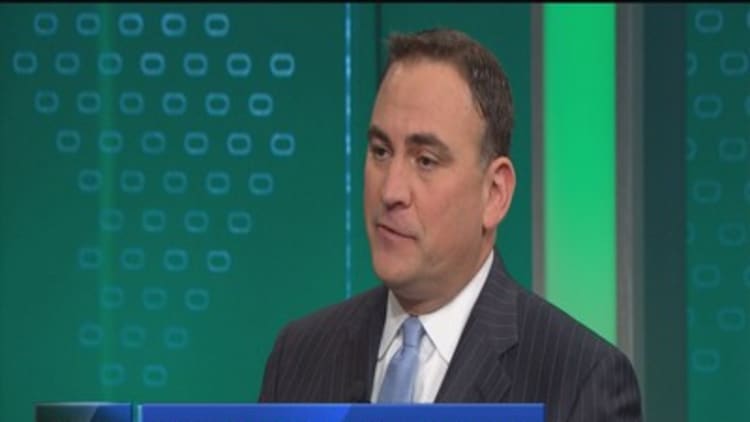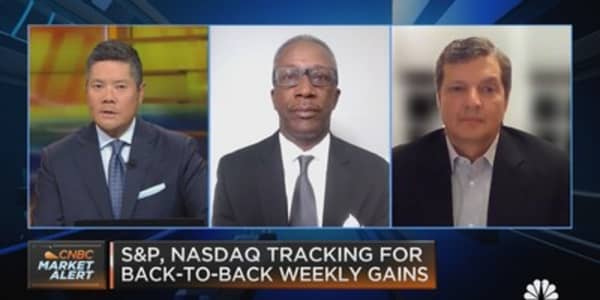Alicia Munnell, director of the Center for Retirement Research at Boston College, recently dropped a bomb: Her center's research uncovered the fact that defined contribution plans, such as 401(k) plans, provide about the same percentage of a retirees' income that pensions once did.
That was the good news. Now for the bad news.
Even if 401(k) plans are the way a majority of Americans pay for retirement now, most people still don't know how to evaluate whether or not they have a good plan. A bad plan, with exorbitant fees and poor fund choices, can mean surrendering hundreds of thousands of dollars in retirement savings during the years of investing.
Fees, for example, vary widely from one plan to another, and it's hard to know how much you're paying. Many people don't even realize they're paying anything at all to invest in their 401(k), according to an AARP survey.
Baffling number of fees
Much of the confusion stems from all the different fees 401(k) plans charge. There are three main ones. The biggest is the investment management fee, which pays for investing your money. Fees can range from 10 basis points for institutional shares of index funds up to 2 percent or 3 percent of assets for actively managed funds.
In addition to fees paid to the portfolio managers to invest your money, your fund may also be charging a 12b-1 fee, an ongoing fee that is used to pay commissions to brokers and salespeople.
Then there's the plan administration fee, which is paid to the company that does the day-to-day management of the plan. It can run from $100 to $200 per participant and is sometimes paid for by an employer.
Finally, there is the individual service fee for additional services, such as loans from your 401(k) or for using a brokerage window. This fee is paid only by the plan participants who use the service.
All in, 401(k) fees can range from 50 basis points up to 3 percent, said David Walters, a CPA and certified financial planner with Palisades Hudson Financial Group. Any plan charging more than 1 percent, Walters insisted, should be seen as suspect.
"Taken over an employee's lifetime, that can make a huge difference in what [workers] get to spend in retirement," Walters said.
According to a report from the liberal think tank Demos, a married heterosexual couple who have invested consistently during their careers and never made any withdrawals — what Demos calls "ideal" savers — would have given up $154,000 to fees. That's about 33 percent of the worth of their entire nest egg.
Small-firm workers fare worse
Of course, it's not always possible to get the best retirement plans available.
Small companies typically have plans with higher fees because they don't have the negotiating leverage to drive down fees from plan providers. And those companies don't have in-house experts to research plans and make sure their employees are getting a good deal.
Plans with less than a $1 million pay 1.60 percent in fees. Meanwhile, those with more than a $1 billion only pay 33 basis points (or 0.33 percent), according to research firm BrightScope, which ranks retirement plans.
Assume your employer did the best they could. They have the exact same interest in getting lower fees that you have.Yoav ZurelCEO of FeeX
"The plan was probably put together by the company founder, and it's responsibility number 722 on their list of responsibilities," explained John Fattibene, a CFP and founder of Harvest Financial Partners, a financial planning firm that advises small businesses on their 401(k) plans.
But don't assume that if you're working for a large company, you're getting the slimmest fees and best investment options, said Yoav Zurel, CEO of FeeX, a New-York-based start-up that analyzes how much individuals are paying for their retirement accounts.
"The biggest employers out there, only 40 percent have optimized their 401(k)," he said.
Better 401(k) plans now
The good news is that 401(k) fees are coming down, according to BrightScope. In 2009 the average plan cost was 1 percent, but in 2012 that had come down to 0.91 percent, or 91 basis points, a pretty dramatic decline.
"Fees will continue to the fall," predicted Brooks Herman, BrightScope's director of research.
There are a number of reasons for this. First, employers themselves deserve some of the credit. They have a fiduciary responsibility to pick the best plan and investment options for their employees.
"There is increasing awareness by plan sponsors that fees are bad," Herman said.
A number of class-action lawsuits — most recently against Boeing — underscore this responsibility. In August, Boeing settled with employees that accused the aircraft maker of mishandling their plan by allowing them to pay excessive fees.
Second, said Herman, index funds — which usually have lower fees — are more common. Eighty-eight percent of plans have them.
New regulations have an impact
Lastly, in 2012 the Department of Labor mandated that employers must disclose fund fees to their participants annually. Despite the disclosures, the majority of participants probably don't look at them, said Rick Meigs, president of 401khelpcenter.com.
However, he added, "there is always that active minority [of employees] out there, and they'll sit down and they'll read it because they care about this stuff. [What they do] benefits the majority."
The DOL regulation has enabled FeeX to trawl these annual reports and analyze individual 401(k) plans and IRAs. The firm suggests alternative investments within each plan to bring fees down. "Without these fee disclosures," said Zurel, "we wouldn't get any data."

Making a bad plan better
Even with all the changes for the better, some workers are still stuck with crummy 401(k) plans. If that's the case, said Walters, look for workarounds to put yourself in better financial shape.
Since the biggest 401(k) expense is the cost of the underlying funds — accounting for two-thirds to three-quarters — it makes sense to start there. "Focus on what you have control over," he said.
Use index funds when you can, which tend to be less expensive than actively managed ones. But don't assume you're getting a steal just because it's an index fund, said Fattibene of Harvest Financial Partners.
"I've seen S&P 500 funds that charge 80 basis points when you can get an S&P fund from Vanguard for 5 basis points," he said.
Look out the window
Since about half of 401(k) plans have a brokerage window, which allows you to invest in any mutual fund, exchange-traded fund or stock that is available for trade at any brokerage, you might be able to bring your costs down by using it.
The brokerage window gives you access to the whole universe of low-cost fund options and exchange-traded funds.
"If you're in a 2 percent plan, you'll have a ton of extra fee savings [by using a brokerage window], though you might have to pay a little bit extra for the brokerage window," said Meigs at 401khelpcenter.com.
Talk to the biggest plan participant
If you're ready to take matters into your own hands, talk to you boss about how to improve the plan. In small companies, the company owner is likely to be the plan's largest participant and is shouldering the bulk of the fees.
Remember to tread gently, experts say.
"Don't accuse them of anything," said Zurel of FeeX. "Assume your employer did the best they could. They have the exact same interest in getting lower fees that you have."
— By llana Polyak, special to CNBC.com







